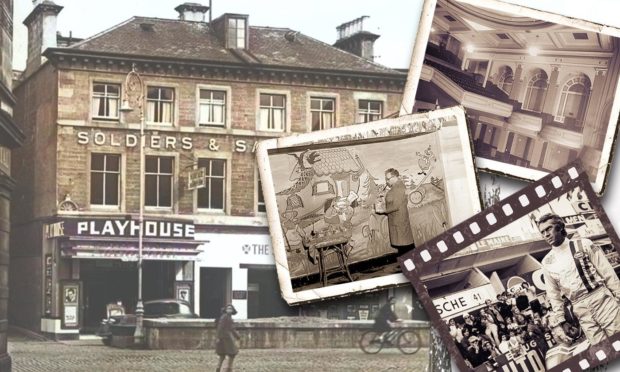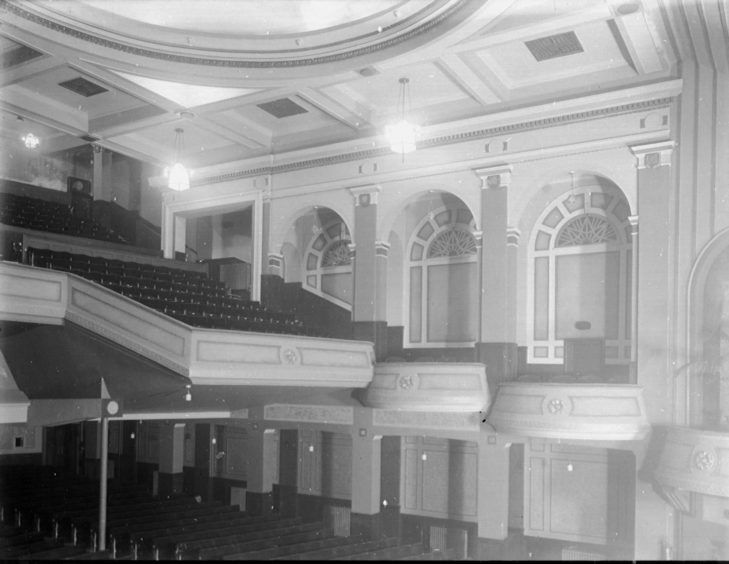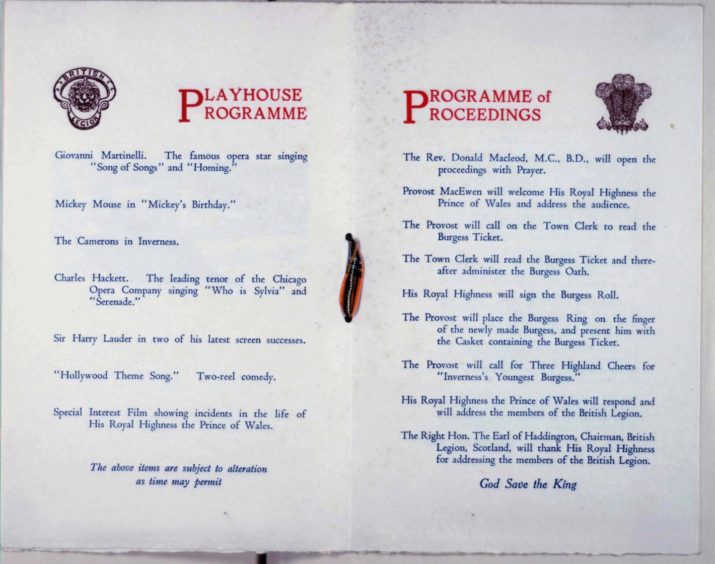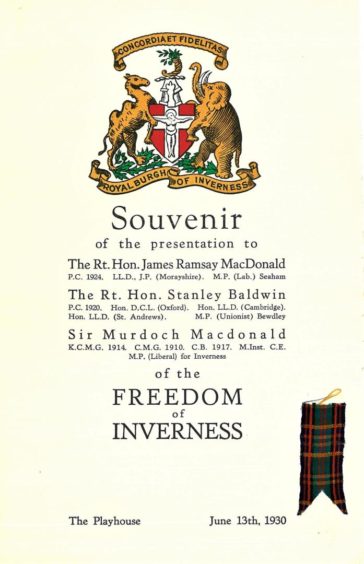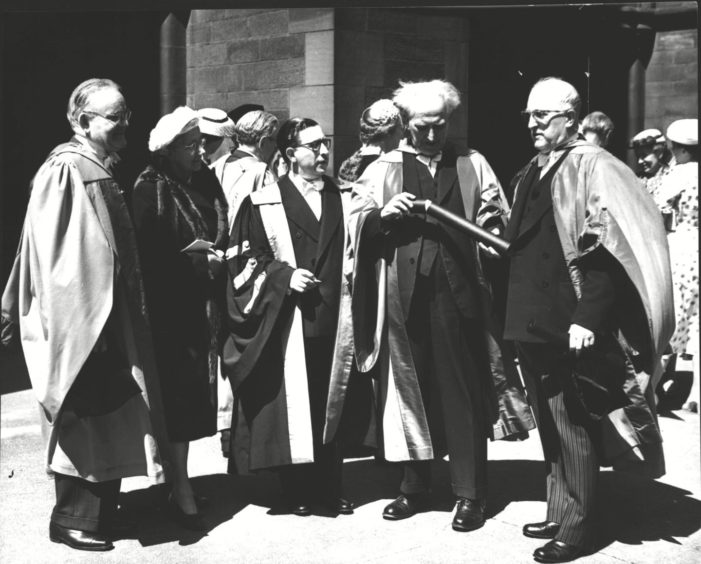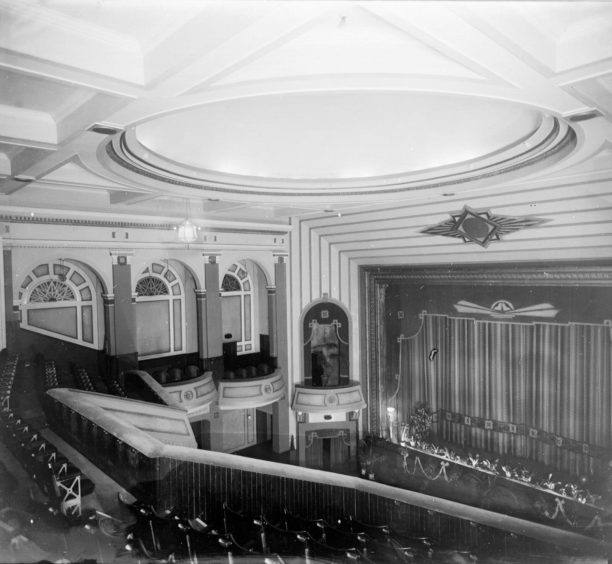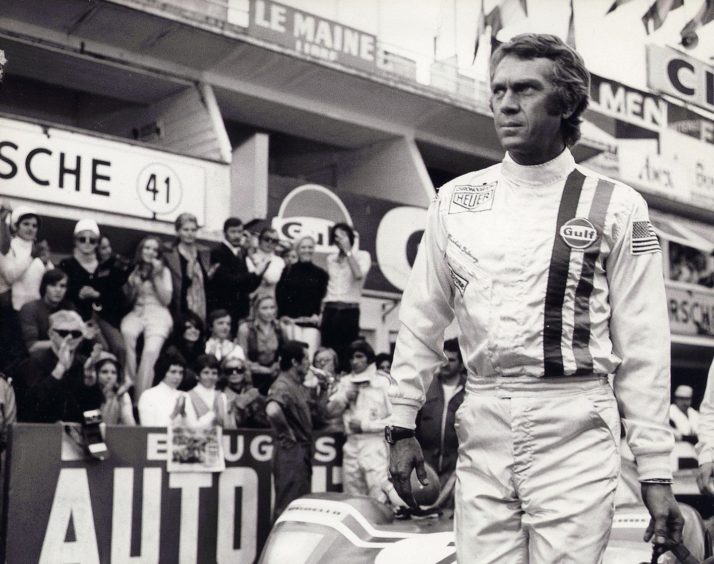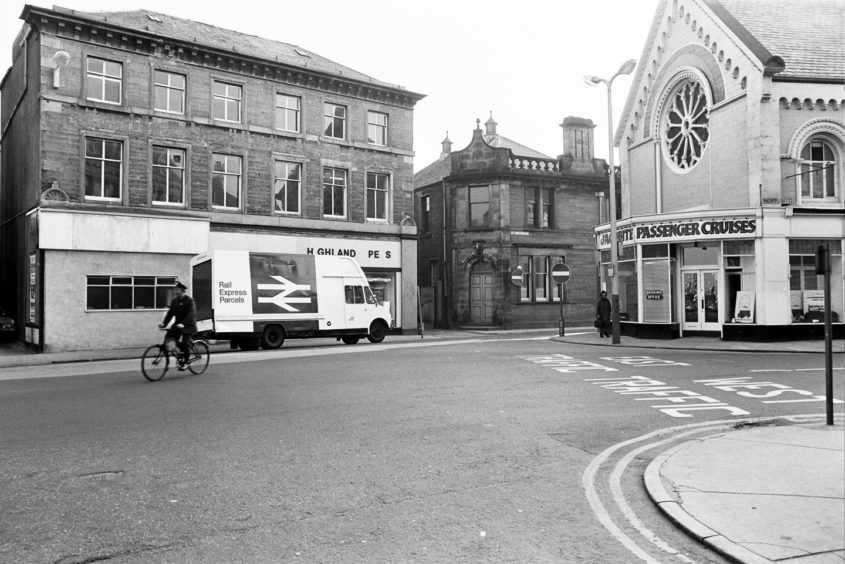Going to the cinema for the first time as a young child is an experience that never leaves you.
As you grow up, going to the pictures still carries that thrill of excitement and anticipation- binge-watching movies at home still can’t compare.
Movie-goers in Inverness last century had four cinemas to choose from, The Palace, La Scala, The Empire and The Playhouse.
They’ve all gone, much lamented by those who patronised them.
Large and luxurious
The Playhouse, near the junction of Academy Street and Eastgate, holds a special place in the heart of many an Invernessian.
The cinema, designed by architects R. Carruthers Ballantyne and Taylor, opened on December 7 1929 for the Highland Cinema Company Ltd.
It was large and luxurious, seating more than 1,400, and with a proscenium arch almost 37ft wide.
It boasted a Western Electric sound system, and a café, to be the scene of many children’s Christmas parties to come.
The luxurious Playhouse didn’t just show movies, it was the venue for many important civic functions down the decades.
In a glittering ceremony for the Prince of Wales becoming a Burgess in 1931, the audience was entertained by the tenors Giovanni Martinelli and Charles Hackett and by short films featuring Mickey Mouse, the Camerons and Harry Lauder.
The proceedings were also relayed to La Scala cinema on the corner of Academy Street and Strother’s Lane, while loudspeakers were set up outside the Playhouse for the public.
Freedom of Inverness
It must also have been a memorable night on June 13 1930 when Ramsay MacDonald, Stanley Baldwin and Sir Murdoch Macdonald MP were given the Freedom of the Inverness.
It appears to have been a Macdonald-themed event – Stanley Baldwin’s mother was a Macdonald – with special preference for tickets to be given to Macdonalds to attend.
General managers of cinemas in those days were far from anonymous people in the background.
They were larger than life characters, as The Playhouse would testify in its 43 years of existence.
Alexander Boyne King (later Sir) was brought in to manage the cinema.
He started his career in cinema selling programmes in the Princess Theatre in the Gorbals, and by 1914 was manager of the Lorne Cinema House.
His big move was to Inverness as principal booking manager for Caledonian Associated Cinemas (CAC)
The company started with nine cinemas in the north-east in 1935, but by 1950, A B King had grown the number to 49.
Highly-decorated
For his astute business sense, shrewd movie-buying choices and services to the cause of cinema in Scotland, he received many honours.
He was made CBE in 1937 and knighted in 1944.
He was a Justice of the Peace and a deputy lieutenant of the county, City of Glasgow.
In June 1957, the University of Glasgow made him a Doctor of Law.
After A B King came Malcolm ‘Pop’ Roberts, and after him, 80 years ago this year, Jimmy Nairn (1900-1982), projectionist, cinematographer and legendary weaver of dreams for Inverness children.
He too began his career in Glasgow, working as a part-time projectionist at a cinema in Pollokshields, aged 15.
From there he went to manage the Savoy in Edinburgh ten years later, the Regal, Stirling, 1934 and the Playhouse, Inverness in 1941 until his retirement in 1972.
He didn’t just show movies, he made them too.
In 1931 the age of the silent movie was over and he claimed to be the first amateur filmmaker to produce a ‘talkie’.
He made more than 40 films about the local area, many of which were used to promote the Highlands.
Balmoral Castle film
He found favour with royalty, commissioned to make a film of George VI and the Duchess of York at Balmoral Castle.
He was there recording everything, from important civic occasions such as the Queen Mother becoming a Burgess of Inverness at the Playhouse, to Gala Queen parades and scenic tours of the city and Loch Ness.
His still photographs number thousands, and are held in the Highland Photographic Archive.
Little did anyone know, but the Playhouse was doomed when it hired young projectionist Raymond Sutherland.
He lit the curtains behind the screen in October 1971, causing the cinema to be cleared of 150 people.
Sutherland helped fight the fire, which caused minimal damage.
But in March the following year, he struck again, starting a blaze under the balcony.
Again he helped fight the fire as the 300 people who had been watching Le Mans with Steve McQueen made it to safety without panic.
Within minutes smoke and flames were leaping through the roof.
Up in smoke
Jimmy Nairn heard of the blaze when he arrived home from a visit to Fort Augustus, and watched his cinema ‘reduced to a shell within the hour,’ a local newspaper reported.
One of the first to raise the alarm was 16-year-old Linda Mapplebeck who told the newspaper: “I had just shown a man to his seat in the corner of the balcony when I saw a puff of smoke.
“I ran and told the usherettes downstairs, who told everyone to leave.”
Sutherland’s employers, CAC, didn’t realise at the time that he was responsible, and employed him in their other Inverness cinema, La Scala.
Almost a year later, Sutherland struck again, setting a fire in a store beneath the projection room, causing some electrical damage.
This time he was arrested.
Stories emerged in court of Sutherland’s psychological problems and he was sentenced to four years behind bars.
See more like this
